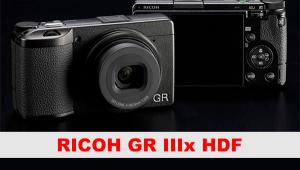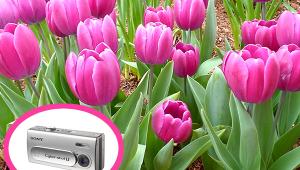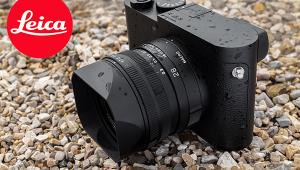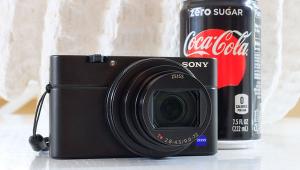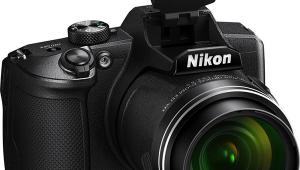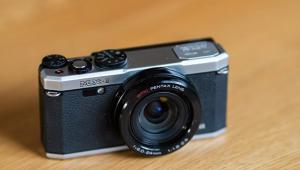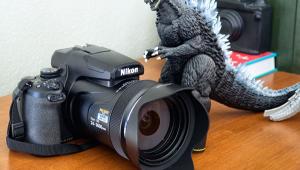Panasonic Lumix DMC-LX100 Compact Camera Review



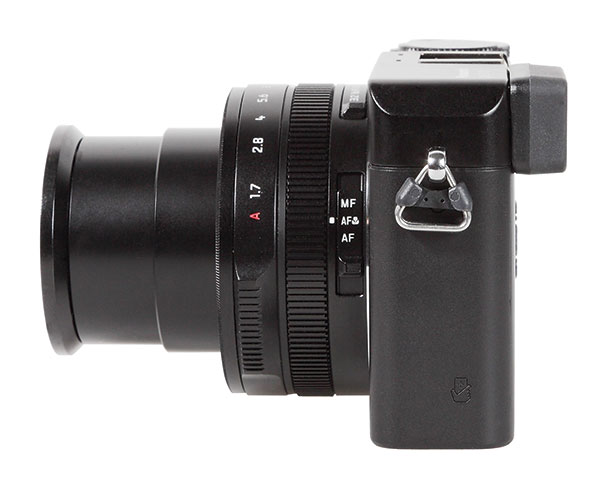

[Editor's Note: Lab test and comments are by Betternet, Shutterbug’s TIPA-affiliated testing lab. TIPA (www.tipa.com) is a worldwide association of photo and imaging magazine editors. Shutterbug is the sole US member of the association, and Editor at Large George Schaub serves as a member of the Technical Committee. Please click on the Image Tech tab on the home page for more camera review tests.]
Panasonic’s LX100 is the top-of-the-line camera in the company’s compact LX series. Compared to other LX models, it is the first camera with an MFT (Micro Four Thirds) sensor. However, the camera doesn’t use the whole image sensor area of 17.3x13mm, so its crop factor is 2.2x instead of the 2.0x of standard MFT cameras.
The camera has an integrated (non-interchangeable) lens with a 24-75mm focal length (35mm equivalent). This is a high-speed f/1.7-2.8 lens developed and certified by Leica. It allows users to create images under quite dim available light situations where a standard compact camera would fail. The wide aperture also allows for creative use of shallow depth of field.
Camera Build & Layout
The LX100 has an electronic viewfinder (EVF) with extremely high resolution (2.76 million RGB dots) and an “eye sensor” that switches automatically between EVF and monitor, plus manual switchover when desired.
The camera has “retro”-style handling for manual exposure control, with a lens ring to set up aperture size and a setup dial on the top to change shutter speed. If both rings/dials are set to “A” the camera will work in automatic mode. If only one of these settings is changed, the camera works in aperture or shutter speed priority mode. Partial stops and “intermediate” shutter speed settings can be chosen with the electronic setup dials of the camera. An additional dial on the top is used for EV compensation, which can be set up for +/- 3.0 EV in 1/3 EV steps.
The large body and the larger grip on the right-hand side (at least when compared to the forerunner LX7) make working with the LX100 a very comfortable experience. The camera offers numerous controls and effects in its menu and three function buttons on the top. In standard settings, the function button near the eyepiece controls the eye-finder mode (LCD or EVF); the second starts the Wi-Fi function; and the third is used as a “back” button in the menu and to delete images in review mode. A Q.MENU button allows users to get direct access to the most important image settings.
For menu navigation the camera offers a four-way control field that is encircled by a setup wheel. In addition, the user can also change the image aspect ratio (4:3, 3:2, 16:9, and 1:1) with a special switch on the top of the lens.

Comments On Image Quality
Color: The camera showed an overall good color reproduction performance, but surprisingly high saturation in dark blue nuances. We note that many cameras we test display higher magenta rates and therefore very deep saturation, but the Panasonic LX100 results are quite high. This is visible in the standard test box image, where the blue spool in the upper right shows much higher saturation than all the other colors. All other colors are reproduced with lower errors. Brighter skin tones have a higher magenta rate than usual, but the overall reproduction of skin tones is very good.
Sharpness: The Panasonic LX100 showed a very good performance in our resolution/sharpness tests. The test chart was reproduced with 2,786 of 3,088 lines per picture height. The test images were shot in the 4:3 aspect ratio, which offers the maximum resolution. The high sharpness result is based on the MFT sensor, the high-quality lens, and the image processing. The camera showed some overshot and undershot effects that emphasize contrast lines and create a little oversharpening in the images.

Noise: Noise results are on the same level as other MFT cameras. The luminance noise level is low in images taken at ISO 200 to ISO 6400 (below 1.0 percent), but above ISO 6400 it increases. Color noise becomes visible in images taken at ISO 800 and ISO 1600. The anti-color noise filtering effects become visible in images taken at ISO 3200 and higher. At ISO 12,800 and ISO 25,600 they become quite annoying and significantly reduce image detail.
The camera showed average results in our dynamic range tests. It reproduced the Stouffer 4110 chart with a maximum of 10.5 f/stops. The camera delivers more than 10 f/stops in nearly all ISO settings up to ISO 1600 and only shows a real decrease at the highest ISO settings. Using manual image style settings to “flatten” the contrast curve, we were able to attain even higher results (up to 11.1 f/stops during our tests), but for this evaluation we used the standard settings of the camera.

Comments On Video Functions
The Panasonic LX100 offers a wide variety of video recording capabilities. In Full HD mode, it is able to record videos with high frame rates: 50 (PAL setting) or 60 (NTSC setting) frames per second in progressive mode. In Full HD mode it uses a standard AVCHD 2.0 file and compression format, but the camera also offers MP4 mode. In MP4 mode it is able to record 4K movies with 3840x2160 pixels at 24, 25/30 frames per second. The camera offers numerous additional recording settings with different resolutions, frame rates, and interlace/progressive modes like 24p, 50i, and more. When recording in 4K mode, fast SDHC or SDXC cards are recommended.
The LX100 allows manual control of exposure settings when shooting videos. The method for changing aperture size or shutter speed settings is similar to that used in photo mode; that is, the videographer has to use the aperture ring on the lens or the shutter speed dial on the top.
Users can also change ISO speed manually: in contrast to photo mode, the maximum ISO speed is 6400. Any attempt to use higher ISO speed settings will cause the camera to default back to ISO 6400. The camera also offers manual sound control wherein the user can define or change the sound level. Unfortunately, there is no microphone jack, which could be useful for even greater sound quality recording control.
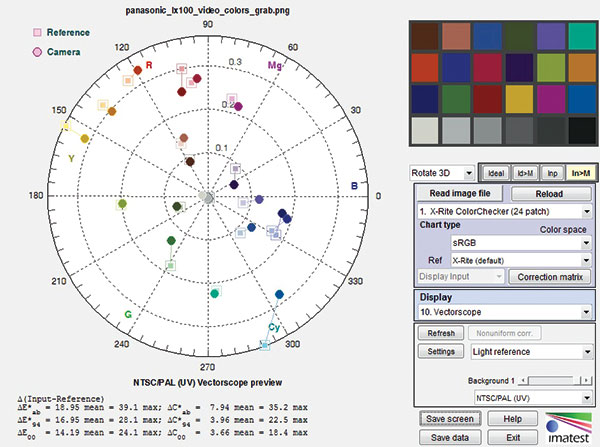
Comments On Video Quality
The Panasonic LX100 showed an excellent performance in our video tests. Full HD videos were reproduced with 847 of 1,080 lines per picture height, while 4K videos showed 1,832 of 2,160 lines in picture height. Just like in photo mode, sharpness is a bit exaggerated by the image/video processor. Hard contrast lines show some overshot and undershot halo effects.
The color reproduction in video mode is similar to the color reproduction in photo mode. Blue nuances are oversaturated, especially in the clear cyan tone in our test chart. In real-life scenes the camera showed natural-looking colors, albeit with high but not excessive saturation.
The dynamic range results are on a little lower level than in photo mode. The LX100 achieved a maximum of 10 f/stops in video mode: at most ISO speed settings it is between 9 and 10 f/stops.
Scorecard
Pro
+ Compact camera with a stylish retro design
+ Large image sensor for a “compact” camera
+ High-speed lens system
+ High-resolution EVF
+ Wi-Fi for data transfer and remote control
+ High video quality (4K)
Con
- Missing swivel monitor
- No built-in flash (camera is supplied with external mini flash)
The Panasonic Lumix DMC-LX100 has a list price of $899. For more information, visit www.panasonic.com.
Image Tech is where we publish web-exclusive lab reports on cameras. To read the reports please go to the Shutterbug homepage at www.shutterbug.com and click on the Image Tech tab on the top navigation bar. New reports are published frequently, so check Image Tech for updates.
Image Tech lab tests and comments supplied by BetterNet, Shutterbug’s TIPA-affiliated testing lab. Shutterbug is the sole US representative within TIPA, a worldwide association of photo and imaging magazines. Edited by George Schaub, a member of TIPA’s Technical Committee.
Lab results and test images by BetterNet, our TIPA-affiliated testing lab.
- Log in or register to post comments
